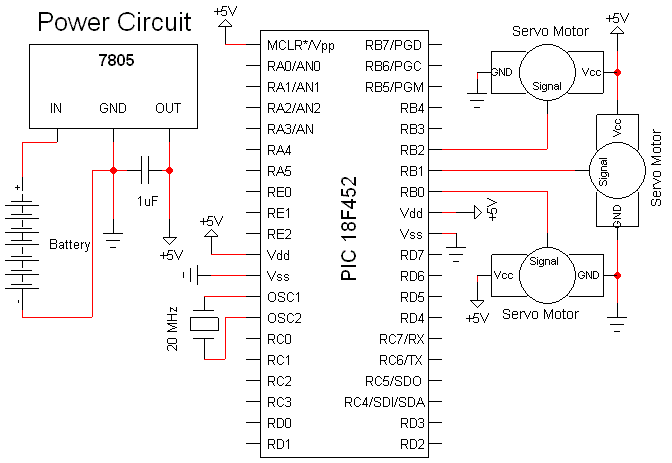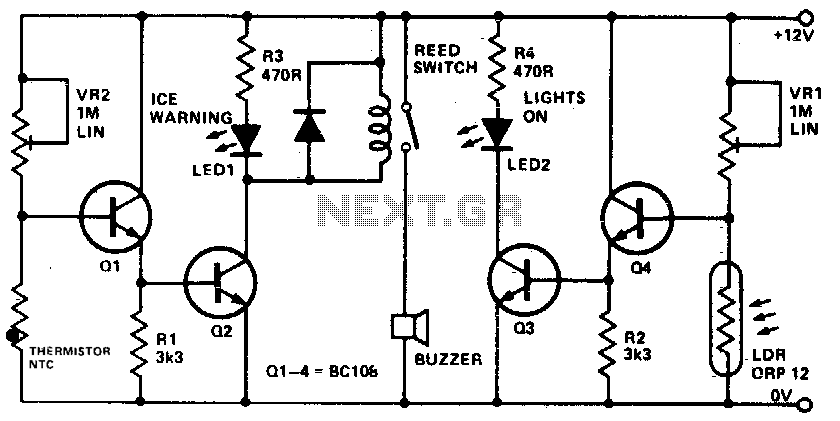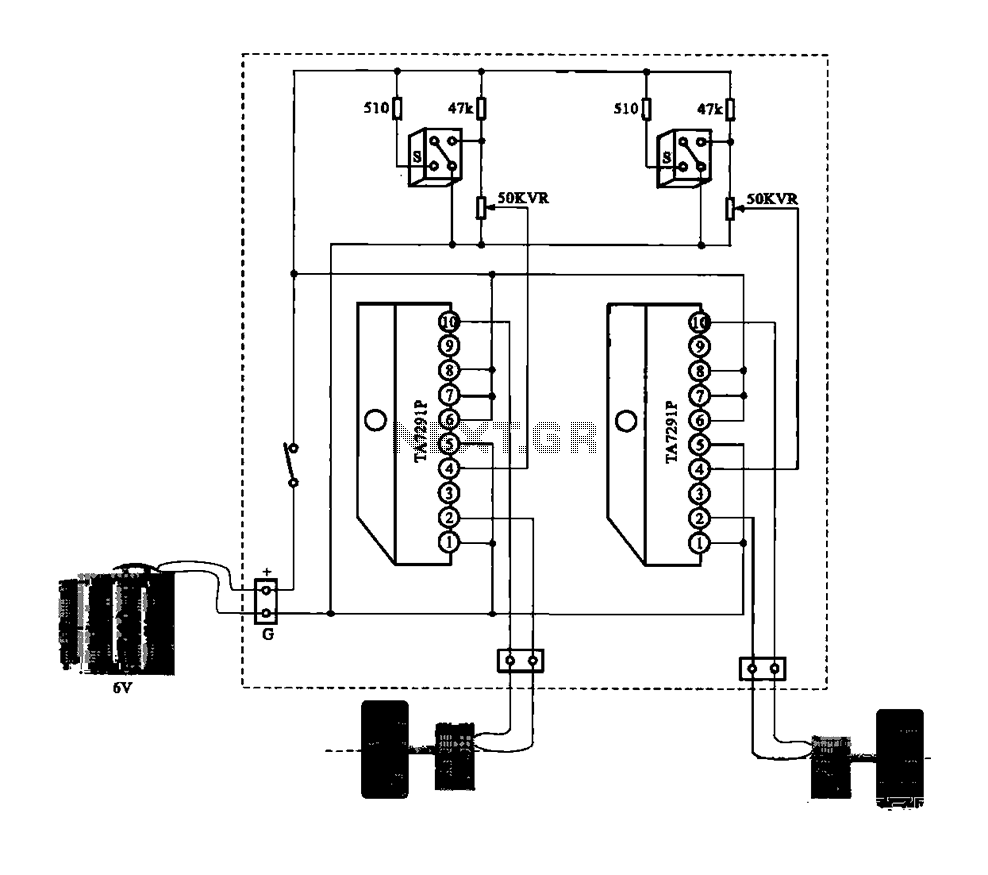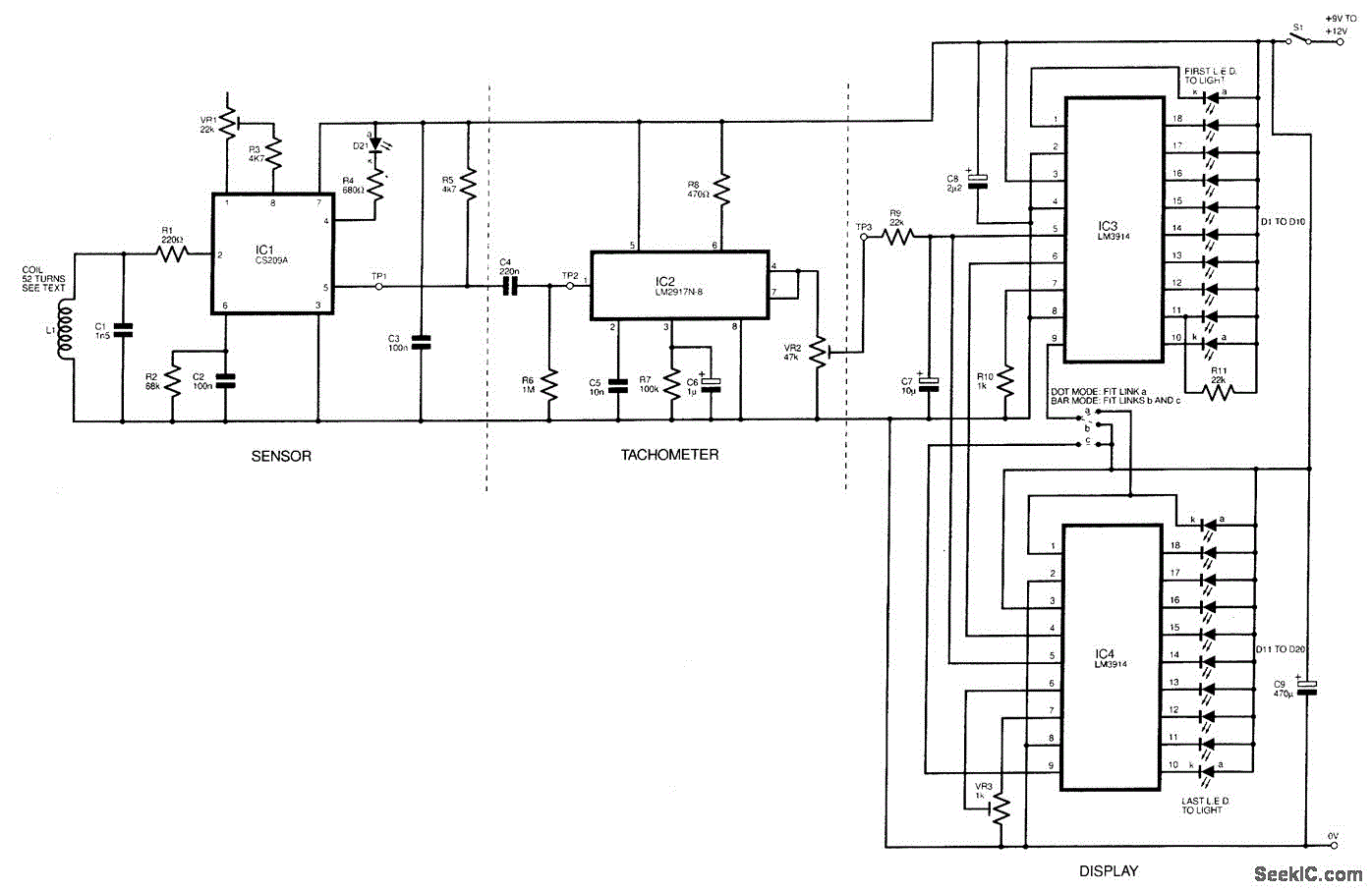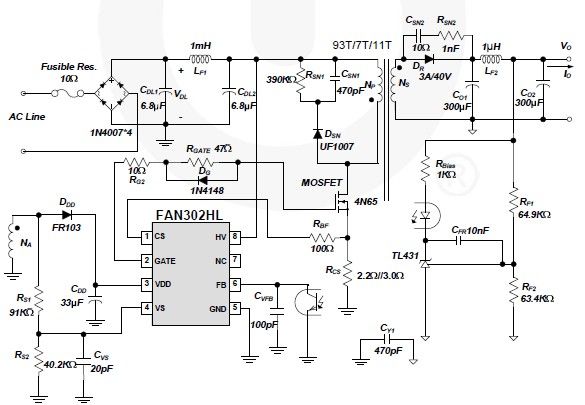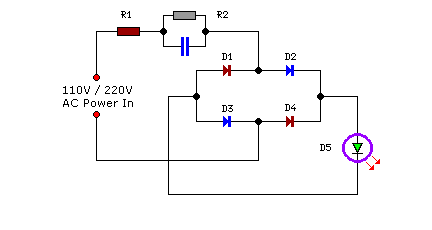
A Light Operated Repeating Timer Circuit
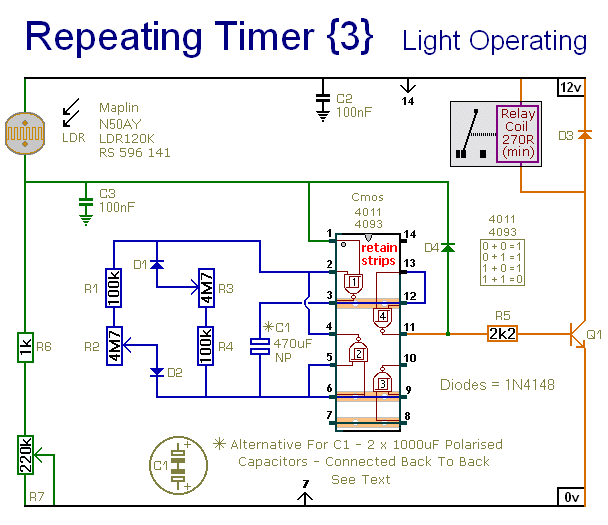
This circuit closely resembles Repeating Timer No. 2. However, the inclusion of a light-dependent resistor (LDR) allows the timer's operation to be confined to daylight hours. Resistor R7 enables the adjustment of the light level at which the timer will cease operation. The specific type of LDR is not critical, but it is essential to ensure the voltage on pin 1 is appropriate. Any LDR should function adequately, although adjusting the value of R7 may be necessary to obtain the desired range of light sensitivity. The circuit operates primarily as an astable oscillator, with the output timing determined by the capacitance of C1 and the rate at which it charges and discharges through the resistor network. The duration for which the relay remains energized is governed by resistors R1 and R2, while the duration it stays de-energized is controlled by R3 and R4. The fixed resistors establish the minimum time periods, while the maximum durations are adjustable via R2 and R3. With the specified component values, both time periods can be adjusted between approximately 1 to 30 minutes. If precise timing is not critical, the potentiometers can be omitted, allowing R1 and R4 to set the timing instead. Due to manufacturing tolerances, the exact time periods achievable will depend on the characteristics of the components used, with a 4093 providing longer durations compared to a 4011. It is important to note that the on-board relay should not be used to switch mains voltage, as the layout does not provide sufficient isolation between the relay contacts and low-voltage components. For switching mains voltage, a suitably rated relay should be mounted in a safe location away from the board. A single-pole changeover (SPCO/SPDT) relay has been used, but a multi-pole relay may be employed if it meets the application requirements. When the oscillator is active, the polarity of the charge on C1 alternates, necessitating the use of a non-polarized capacitor. A non-polarized 470µF capacitor can be simulated by connecting two 1000µF polarized capacitors in reverse parallel, as illustrated. The rationale for this configuration is discussed in the detailed circuit description. Since non-polarized capacitors are not commonly available, the prototype was constructed using two polarized capacitors. The timer is designed for operation with a 12-volt power supply but can function within a range of 5 to 15 volts, provided a relay with an appropriate coil voltage is selected. Supporting materials for this circuit include a parts list, a step-by-step guide for constructing the circuit board, a detailed circuit description, and additional resources.
The circuit operates as a daylight-sensitive timer, leveraging the characteristics of an astable oscillator configuration. The LDR's resistance decreases with increasing light intensity, allowing for a customizable threshold for activation. The adjustment of R7 is crucial for fine-tuning the light sensitivity, ensuring that the timer only operates during the desired daylight conditions. The astable oscillator generates a square wave output, where the timing intervals are dictated by the RC time constant formed by R1, R2, and C1 for the on-time, and R3, R4, and C1 for the off-time.
The relay's operation is integral to the circuit's function, enabling the control of external devices based on the timer's output. The circuit's design accommodates a range of relay types, provided they meet the necessary specifications for voltage and current ratings. The use of non-polarized capacitors is essential for the stability of the oscillator, and the back-to-back configuration of polarized capacitors effectively achieves this requirement.
Power supply considerations are also important, as the circuit is adaptable to various voltage levels. When selecting the relay, it is advisable to ensure compatibility with the chosen power supply voltage, as this will influence the overall performance and reliability of the circuit. The comprehensive support materials provided facilitate the assembly and understanding of the circuit, ensuring successful implementation in practical applications.This circuit is very similar to Repeating Timer No. 2. However - the addition of the light dependent resistor means that the operation of this timer can be limited to the daylight hours. R7 lets you set the level of light at which the timer will stop. The type of LDR is not critical. The important thing is the voltage on pin 1. Any type of LDR sho uld work satisfactorily. But you may need to change the value of R7 - to achieve the desired range of adjustment. The circuit is basically an Astable Oscillator. And the output times depend on the value of C1 - and the speed at which it charges and discharges through the resistor network. The length of time the relay remains energized is controlled by R1 & R2. And the length of the time it remains de-energized is controlled by R3 & R4. The fixed resistors set the minimum period lengths - and the maximum period lengths are set by R2 & R3.
With the component values shown - both periods are adjustable from about 1 to 30 minutes. You can change the component values to suit your own requirements. If your time periods don`t need to be too precise - and more-or-less is close enough - you can leave out the pots altogether - and simply rely on R1 & R4 to set the times. Owing to manufacturing tolerances - the precise length of the time periods available depends on the characteristics of the actual components you`ve used - and a 4093 will produce longer time periods than a 4011.
Do not use the "on-board" relay to switch mains voltage. The board`s layout does not offer sufficient isolation between the relay contacts and the low-voltage components. If you want to switch mains voltage - mount a suitably rated relay somewhere safe - Away From The Board.
I`ve used a SPCO/SPDT relay - but you can use a multi-pole relay if it suits your application. When the oscillator is running - the polarity of the charge on C1 keeps reversing. So C1 needs to be non-polarised. However - you can simulate a non-polarised 470uF capacitor by connecting two 1000uF polarised capacitors back to back - as shown. How and why this works is explained in the Detailed Circuit Because non-polarised capacitors aren`t widely available - the prototype was built using two polarised capacitors.
The timer is designed for a 12-volt power supply. However - it will work at anything from 5 to 15-volts. All you need do is select a relay with a coil voltage that suits your supply. The Support Material for this circuit includes a parts list - a step-by-step guide to the construction of the circuit-board - a detailed circuit description - and more. 🔗 External reference
The circuit operates as a daylight-sensitive timer, leveraging the characteristics of an astable oscillator configuration. The LDR's resistance decreases with increasing light intensity, allowing for a customizable threshold for activation. The adjustment of R7 is crucial for fine-tuning the light sensitivity, ensuring that the timer only operates during the desired daylight conditions. The astable oscillator generates a square wave output, where the timing intervals are dictated by the RC time constant formed by R1, R2, and C1 for the on-time, and R3, R4, and C1 for the off-time.
The relay's operation is integral to the circuit's function, enabling the control of external devices based on the timer's output. The circuit's design accommodates a range of relay types, provided they meet the necessary specifications for voltage and current ratings. The use of non-polarized capacitors is essential for the stability of the oscillator, and the back-to-back configuration of polarized capacitors effectively achieves this requirement.
Power supply considerations are also important, as the circuit is adaptable to various voltage levels. When selecting the relay, it is advisable to ensure compatibility with the chosen power supply voltage, as this will influence the overall performance and reliability of the circuit. The comprehensive support materials provided facilitate the assembly and understanding of the circuit, ensuring successful implementation in practical applications.This circuit is very similar to Repeating Timer No. 2. However - the addition of the light dependent resistor means that the operation of this timer can be limited to the daylight hours. R7 lets you set the level of light at which the timer will stop. The type of LDR is not critical. The important thing is the voltage on pin 1. Any type of LDR sho uld work satisfactorily. But you may need to change the value of R7 - to achieve the desired range of adjustment. The circuit is basically an Astable Oscillator. And the output times depend on the value of C1 - and the speed at which it charges and discharges through the resistor network. The length of time the relay remains energized is controlled by R1 & R2. And the length of the time it remains de-energized is controlled by R3 & R4. The fixed resistors set the minimum period lengths - and the maximum period lengths are set by R2 & R3.
With the component values shown - both periods are adjustable from about 1 to 30 minutes. You can change the component values to suit your own requirements. If your time periods don`t need to be too precise - and more-or-less is close enough - you can leave out the pots altogether - and simply rely on R1 & R4 to set the times. Owing to manufacturing tolerances - the precise length of the time periods available depends on the characteristics of the actual components you`ve used - and a 4093 will produce longer time periods than a 4011.
Do not use the "on-board" relay to switch mains voltage. The board`s layout does not offer sufficient isolation between the relay contacts and the low-voltage components. If you want to switch mains voltage - mount a suitably rated relay somewhere safe - Away From The Board.
I`ve used a SPCO/SPDT relay - but you can use a multi-pole relay if it suits your application. When the oscillator is running - the polarity of the charge on C1 keeps reversing. So C1 needs to be non-polarised. However - you can simulate a non-polarised 470uF capacitor by connecting two 1000uF polarised capacitors back to back - as shown. How and why this works is explained in the Detailed Circuit Because non-polarised capacitors aren`t widely available - the prototype was built using two polarised capacitors.
The timer is designed for a 12-volt power supply. However - it will work at anything from 5 to 15-volts. All you need do is select a relay with a coil voltage that suits your supply. The Support Material for this circuit includes a parts list - a step-by-step guide to the construction of the circuit-board - a detailed circuit description - and more. 🔗 External reference
